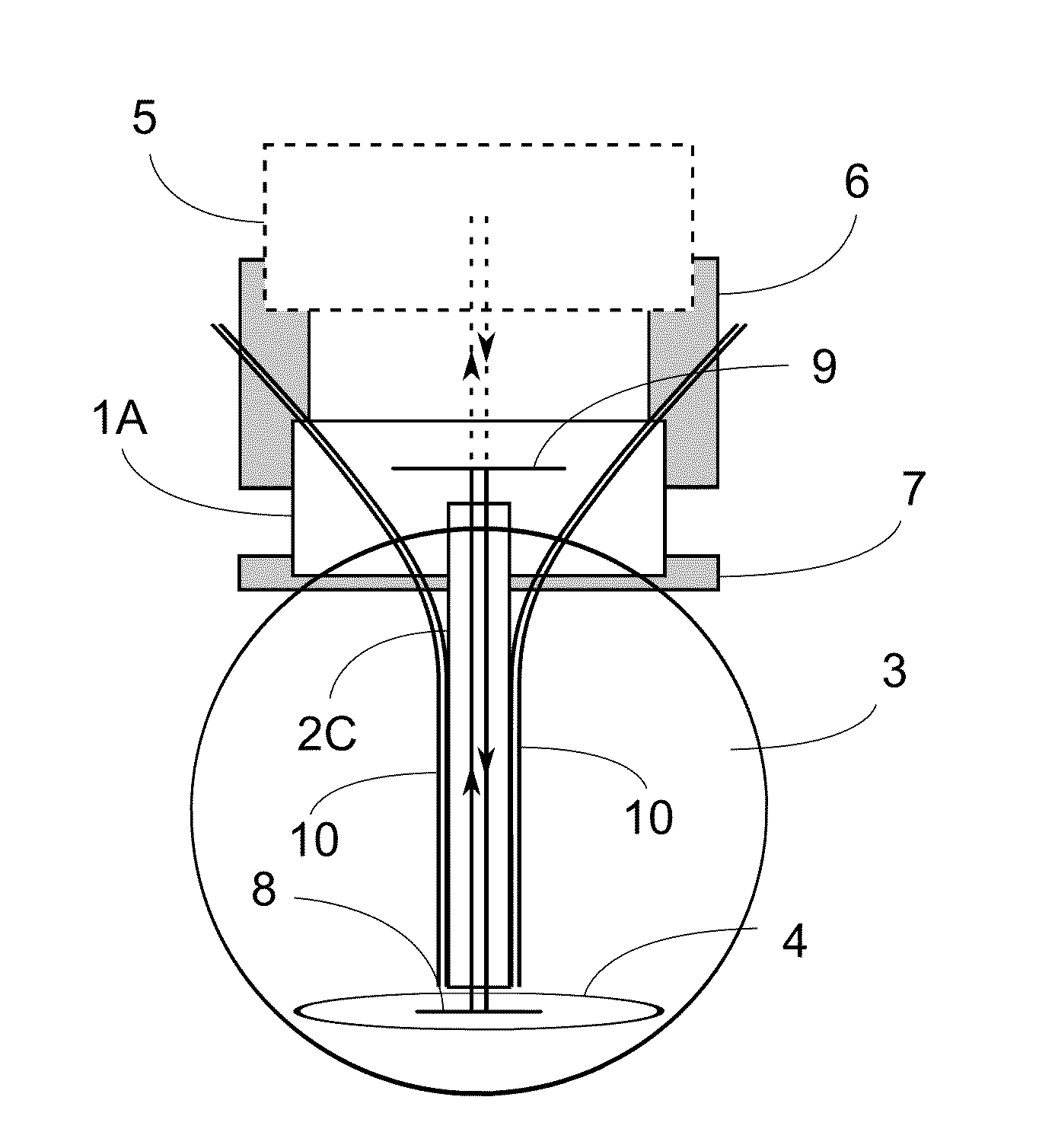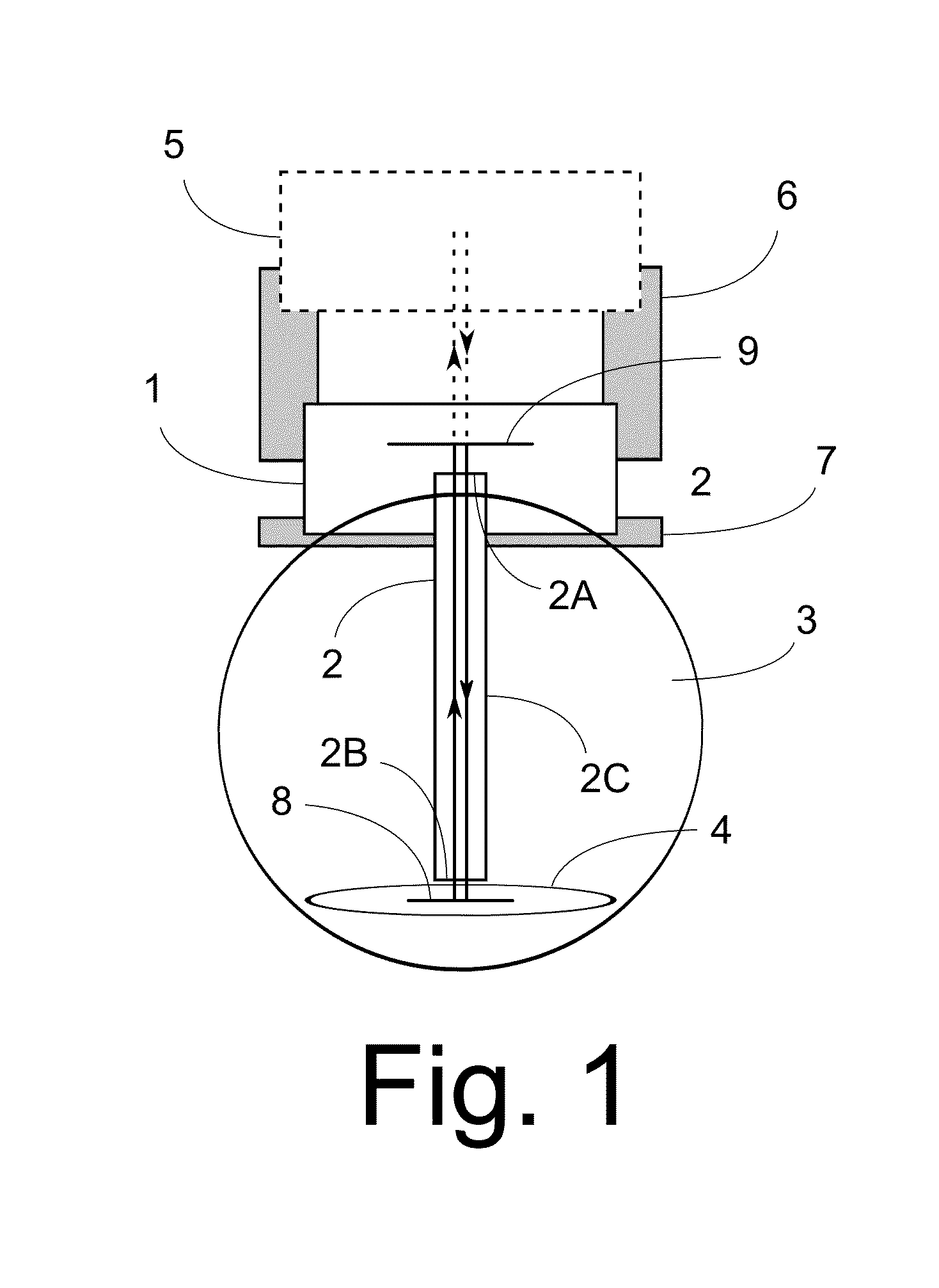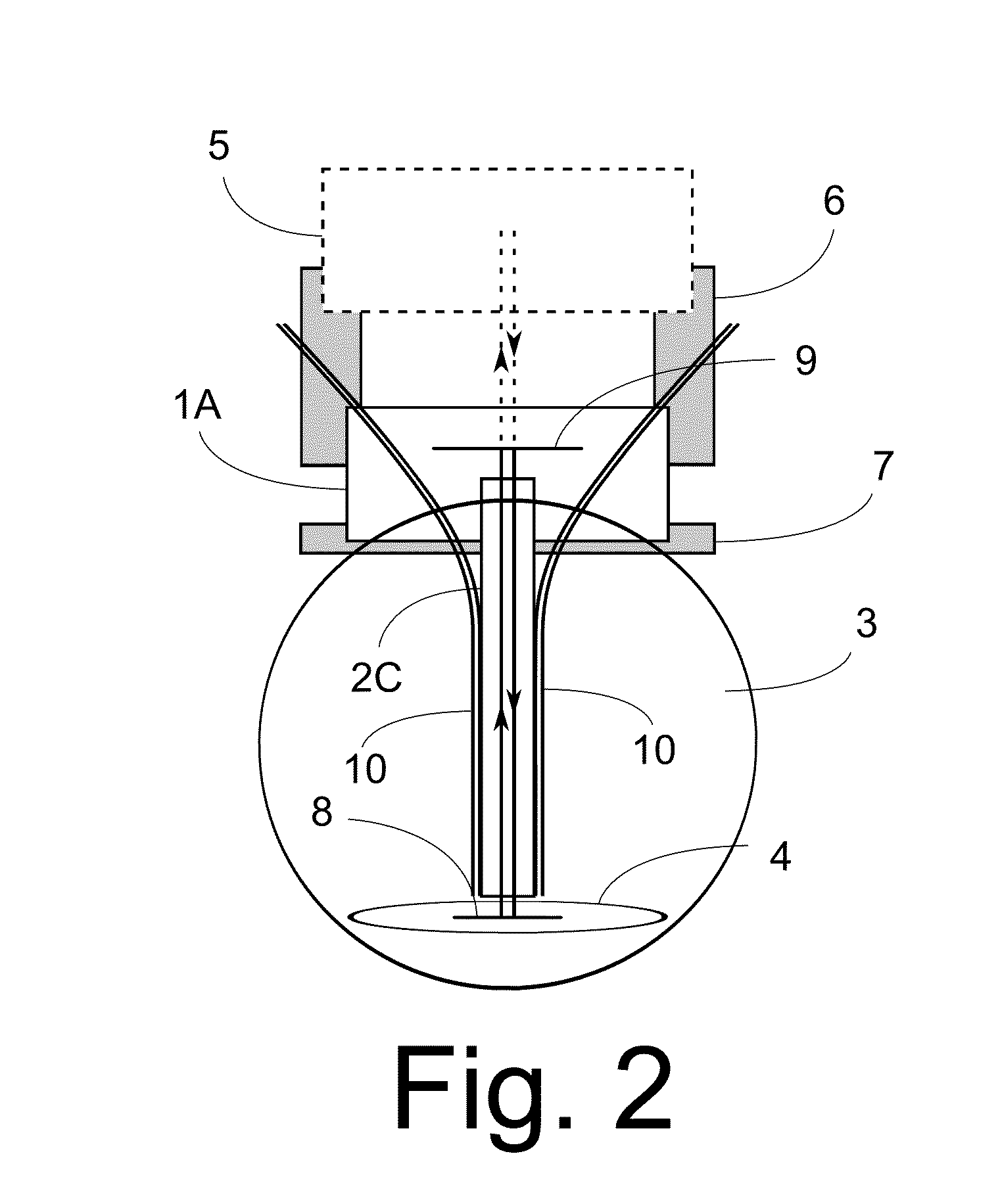Image relaying cannula with detachable self-aligning connector
a self-aligning connector and image relaying technology, applied in the field of biological microscopy, can solve the problem that large objectives cannot be implanted within a sample without causing significant damage to the sampl
- Summary
- Abstract
- Description
- Claims
- Application Information
AI Technical Summary
Benefits of technology
Problems solved by technology
Method used
Image
Examples
Embodiment Construction
[0018]The present invention concerns an optical cannula for coupling an image taken within a biological sample, generally an in vivo biological sample, to an optical system or device, such as a microscope. In order to provide minimal invasiveness with respect to the sample, but in order to reach deep tissues, the cannula includes an extension portion that projects into the sample and a stabilizer portion at which the cannula is mounted to the sample. The cannula features an optical probe that extends through the extension portion and serves as a relay imaging system that relays an image of structures located at the distal end of the extension portion of the cannula to the proximal end of the probe. The optical cannula can be used for image magnification and recording and may also be coupled to an illumination source to optically excite specific areas within a sample. Alternatively, or in combination the cannula may provide coupling for electrodes for electrical stimulation or measur...
PUM
 Login to View More
Login to View More Abstract
Description
Claims
Application Information
 Login to View More
Login to View More - R&D
- Intellectual Property
- Life Sciences
- Materials
- Tech Scout
- Unparalleled Data Quality
- Higher Quality Content
- 60% Fewer Hallucinations
Browse by: Latest US Patents, China's latest patents, Technical Efficacy Thesaurus, Application Domain, Technology Topic, Popular Technical Reports.
© 2025 PatSnap. All rights reserved.Legal|Privacy policy|Modern Slavery Act Transparency Statement|Sitemap|About US| Contact US: help@patsnap.com



